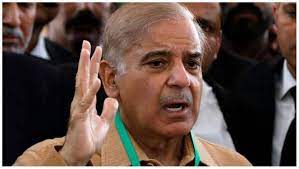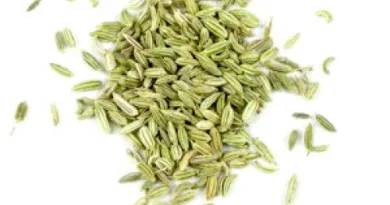Shehbaz Sharif-Pakistan’s Prime Minister For 2nd Time
Shehbaz Sharif
Following the dissolution of parliament in August in preparation for last month’s elections, 72-year-old Sharif was reelected as premier by the legislature. Since then, Pakistan has been led by an interim administration.
Shehbaz Sharif, who became prime minister of Pakistan again on Sunday after his brother turned down a fourth term, has been instrumental in preserving a divided coalition for the past sixteen months following the removal of challenger Imran Khan.
After winning a vote in parliament to become prime minister, 72-year-old Sharif took back the position he had until August, when the legislature was dissolved in preparation for last month’s elections. Since then, Pakistan has been governed by an interim administration.
Despite his elder brother Nawaz Sharif being the favourite to be sworn in again after securing a seat in the parliament, he was chosen by his party and coalition allies to lead the South Asian country.
After winning decisive victories in each of his three prior terms as prime minister, Nawaz Sharif expressed his reluctance to lead a minority coalition government in a post on X, according to his daughter Maryam.
Although it only secured 80 of the 264 seats that were up for grabs in the elections, the brothers’ Pakistan Muslim League-Nawaz (PML-N) party received backing from other parties to secure a majority.
Shehbaz Sharif not only kept the coalition together after Khan was voted out in 2022, but he also assisted Pakistan in obtaining an emergency International Monetary Fund (IMF) bailout last year.

Follow Our Digiknowledge.co.in Page for Latest update about Bikes, Cars, Sports, , Life style and many more.
He was back in the driver’s seat as the PML-N overcame disagreements with the mighty armed forces to defeat their shared enemy, Khan, who was in disagreement with senior generals over matters of policy.
Nawaz Sharif was barred from holding public office at the time and living in self-imposed exile in London. In October, he went back to Pakistan.
The younger Sharif held three terms as chief minister of Punjab, the largest province in the nation, and was better recognised as an administrator than a politician prior to his time as prime minister.
However, he soon assumed the position of mediator between coalition parties that were frequently at odds with one another over important legislation when he became prime minister.
Getting Pakistan out of debt and into an IMF bailout was Shehbaz Sharif’s greatest accomplishment during his brief presidency. After Sharif met with IMF chief Kristalina Georgieva in person in June, the agreement was inked.
On the other hand, during his administration, structural changes required by the IMF programme to restore the economy led to record-high inflation of 38% and rupee depreciation.
As Khan’s government violated an agreement with the IMF shortly before Khan was removed, he holds them accountable for the economic collapse. Inflation, according to Sharif, skyrocketed because his government was forced to implement numerous reforms and eliminate subsidies.
Up coming Challenge for Shehbaz Sharif
- Pakistan is still deeply mired in an economic crisis, with roughly 30% annual inflation and 2% annual economic growth. A high base effect contributed to February’s modest decrease in inflation to 23.1% from a year earlier.
- Because the present plan is set to expire next month and a new extended contract is required to put Pakistan on a limited route to recovery, Sharif will have to repeat his success in getting a short-term IMF bailout.
- He will, however, primarily be responsible for upholding Pakistan’s military connections, which have governed the country since its independence. Experts claim that the generals view the younger Sharif as more acceptable and obedient than his elder brother, who has had a difficult time with the military throughout all three of his mandates.
- The military has disavowed its involvement in political meddling for a number of years. However, since independence, no prime minister has served out a full five-year term, and it has already intervened directly three times to overthrow civilian governments.
- To alleviate the economic crisis, foreign investment and the privatisation of some hulking state enterprises, like the national airline, would be crucial. The Sharis have strong relations to the rulers of Saudi Arabia and Qatar, which may facilitate the acquisition of funds for a number of projects Pakistan has recently put up for sale.
- Although the military has a significant influence on defence and important foreign policy choices, Sharif will need to manage ties with China and the United States, two important allies. Managing the deteriorating relations with Afghanistan, Iran, and India—three of Pakistan’s four neighbors—is another challenge he faces.
Brief about Shehbaz Sharif
Born in the eastern city of Lahore, Sharif came from an affluent family of Kashmiri descent who worked in the steel industry. With a “can-do” attitude in management, he began his political career in 1997 as Punjab’s chief minister.
Those who have worked closely with him, including cabinet members and bureaucrats, refer to him as a workaholic.
The younger Sharif devised and oversaw several large-scale infrastructure projects while serving as chief minister, including the construction of Pakistan’s first contemporary public transit system in Lahore.
When his brother was removed from office as prime minister in 1999 by a military takeover and sent into exile in Saudi Arabia, he became embroiled in the country’s political turmoil.
Once the elder Sharif was found guilty in 2017 of hiding assets connected to the Panama Papers revelations, the younger Sharif entered the national political scene as the PML-N head.
Shehbaz Sharif is a double married man who has no children from his second marriage but two sons and two daughters from his first. The other boys are not in public life, but one is involved in politics.




